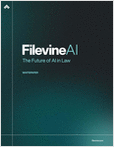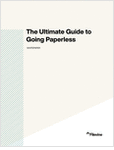A version of this story was originally published by New York Law Journal, an American Lawyer affiliate.
A federal law on cigarette advertising preempts a New York City regulation requiring merchants to display in their stores gruesome pictures of lung disease, brain damage and decaying teeth, the U.S. Court of Appeals for the Second Circuit ruled Tuesday.
The circuit upheld a lower court ruling that a regulation of the New York City Health Code was preempted by the Federal Cigarette Labeling and Advertising Act.
The rule required advertising at the point-of-sale for cigarettes, including “a pictorial image illustrating the effects of tobacco use.” Both cigarette companies and merchants objected to posting the images adjacent to cigarettes inside of stores.
Judges Peter Hall, Gerard Lynch, and Denny Chin issued the 30-page opinion in 23-34 94th St. Grocery v. New York City Board of Health. Judge Chin wrote for the panel.
The city’s Board of Health passed a resolution in 2009 adopting the regulation as another weapon in Mayor Michael Bloomberg’s long-running battle to reduce smoking.
Two cigarette retailers, two trade associations and three of the largest cigarette makers–Lorillard Tobacco Company, Philip Morris USA Inc. and R.J. Reynolds Tobacco Inc.–filed suit seeking a declaration that the resolution was preempted by the Labeling Act and violated the First Amendment.
U.S. District Judge Jed Rakoff in Manhattan found the regulation invalid in December 2010, saying, “Even merchants of morbidity are entitled to the full protection of the law,” as the regulation “imposes burdens on the promotion of cigarettes that only the federal government may prescribe”.
The circuit heard oral argument on the city’s appeal on Dec. 1, 2011. Miguel Estrada of Gibson, Dunn & Crutcher, counsel for Philip Morris, argued for the plaintiffs. The other plaintiffs were represented by Cahill Gordon & Reindel (for the retailers); Jones Day (for R.J. Reynolds); and Greenberg Traurig (for Lorillard). Assistant Corporation Counsel Drake Colley argued for the Board of Health.
Chin wrote in Tuesday’s ruling that the Labeling Act was a comprehensive scheme that determined what warnings must accompany the sale of cigarettes, and its preemption provision limits “the extent to which states may regulate the labeling, advertising, and promotion of cigarettes.”
The provision says that states and municipalities, on top of the already-required warnings, can’t require any additional “statement relating to smoking and health.” It also says that no “requirement or prohibition based on smoking and health shall be imposed under State law with respect to the advertising or promotion of any cigarettes.”
Also, the preemption provision allows a state or municipality to enact regulations “based on smoking and health…imposing specific bans on the time, place, and manner, but not the content, of the advertising or promotion of any cigarettes.”
Chin held that the city regulation is “preempted by the Labeling Act because it is a requirement ‘with respect to the advertising or promotion’ of cigarettes.”
He wrote that Congress had “clearly manifested its intent to preempt the Resolution” both through the language of the preemption provision and “the overall statutory scheme.”
“The Resolution requires that every tobacco retailer place signage either (1) next to the register or (2) next to each tobacco product display,” he wrote. “Option (2) directly affects the promotion of cigarettes. By its terms, it affects the display of cigarettes, which is a type of promotion.”
The city had argued that the Board of Health resolution does not deal with the “promotion” of cigarettes as it merely requires the posting of warning signs, but the court disagreed.
“While it is true that the Resolution only explicitly requires action on the part of the seller, not the manufacturer, the City ignores the practical effect the Resolution has on the manufacturer’s promotional activity at the retail location,” Chin said. “Specifically, requiring a warning sign in close proximity to a cigarette display has practically the same effect as requiring a warning on the display itself.”
Chin stressed that the court was not holding that every regulation affecting promotion violates the preemption clause.
As an example, he wrote that the city’s requirement that all cigarettes be displayed behind the store counter or in a locked container would not be preempted, because, while it “clearly affects promotional display” it falls within the exception carved out in the statute for the “place and manner of the display.”
But he found that the city passed the resolution at issue with the belief that Congress had struck the wrong balance between free commerce and the need to discourage smoking.
He wrote that the city’s desire to “tilt the balance more in favor of educating is understandable,” and the city could still try and impose further “time, place and manner restrictions.”
“But what the City may not do is seek to affect the balance by requiring a manufacturer or retailer to display supplemental content at the point of purchase,” he said.
The Second Circuit, like Rakoff, saw no need to reach the First Amendment issue.
In a statement Tuesday, the Board of Health said that the city’s “warning signs depicted the grisly toll of smoking and provided helpful information about how to quit at a place where smokers were most likely to see it. [Tuesday's] ruling is likely to reduce the number of smokers who quit.”
“We are pleased that the Second Circuit reaffirmed that federal law bars state and local governments from regulating the content of cigarette advertising and promotion,” said Murray Garnick, Altria Client Services senior vice president and associate general counsel, speaking on behalf of Philip Morris USA. “This suit has always been about who has the authority to regulate the content of cigarette warnings. That is a power reserved to the federal government without interference or additional efforts by state and local authorities.”
Editor’s Note: The headline for the version of this article that appeared in the Litigation Daily misidentified Gibson Dunn partner Miguel Estrada. We regret the error.





